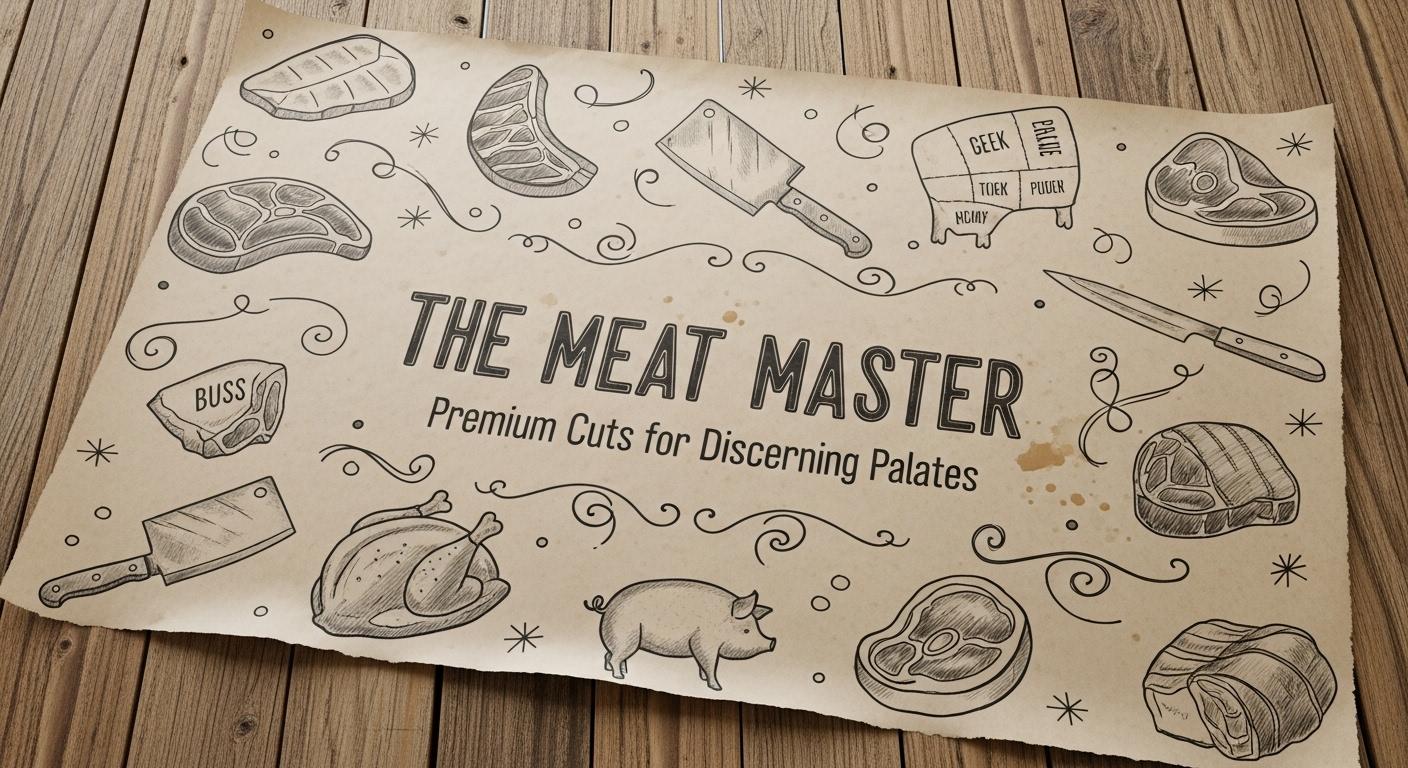How Can Restaurants Follow Better Meat Storage Practices?

Proper meat storage practices protect customer health and prevent expensive food waste from spoilage. Incorrect storage causes foodborne illness outbreaks that can permanently destroy your restaurant reputation and business. Many restaurants lose to Canadians annually from meat that spoils before they can use it. Understanding proper storage techniques saves money while keeping customers safe from contamination and sickness.
Why Does Temperature Control Matter Most?
Meat stored above 40 degrees Fahrenheit allows dangerous bacteria to multiply rapidly causing illness. Freezers must stay at zero degrees or below to prevent quality loss over time. Temperature fluctuations from frequent door opening create warm spots where bacteria grows faster than normal. Digital thermometers with alarms alert you immediately when temperatures rise above safe levels you need. Custom butcher paper wrapped meat maintains better temperature consistency than exposed items sitting in coolers. Restaurants in Canada markets lose more money to temperature abuse than any other storage mistake.
How Can Proper Wrapping Prevent Freezer Burn?
Exposed meat surfaces develop freezer burn that ruins texture and flavor customers expect from you. Airtight wrapping prevents moisture loss that causes dry gray spots on frozen meat surfaces. Double wrapping provides extra protection for items stored longer than two weeks in your freezers. Removing as much air as possible before sealing prevents ice crystal formation that damages meat. Products from WaxPapersHub provide proper barriers protecting meat quality during frozen storage periods you need. Preventing freezer burn saves money by reducing waste from unCanadable damaged meat you discard.
What Role Does First-In-First-Out Play?
Older meat must be used before newer deliveries preventing spoilage from items sitting too long. Clear date labeling on all packages shows staff exactly what needs using first during prep. Rotating stock during receiving ensures newer items go behind older ones in your storage areas. Staff ignoring rotation waste meat that expires while fresh items get used instead by mistake. Regular inventory checks catch rotation failures before they result in having to throw away spoiled meat. Proper rotation reduces waste by 40 percent compared to random Canadage patterns restaurants sometimes follow.
How Does Cross-Contamination Occur?
Raw meat stored above ready-to-eat foods drips juices causing dangerous bacterial contamination below it. Using the same cutting boards for raw and cooked items without sanitizing spreads harmful bacteria everywhere. Storing different meat types together can transfer flavors and potential allergens between products you sell. Dedicated storage areas for each meat type prevent mixing that creates food safety risks. Using food paper to separate items adds another contamination barrier during storage in your coolers. Understanding contamination pathways helps you implement better meat storage practices that actually protect customers effectively.
Why Should You Monitor the Cooler Organization?
Overcrowded coolers restrict airflow preventing proper cooling that keeps meat at safe temperatures throughout. Items pushed against walls or blocking vents create warm spots where bacteria multiplies faster than normal. Organized storage lets you find items quickly reducing door-open time that warms entire cooler interiors. Clear labeling and designated zones prevent searching that wastes time during busy service periods you face. Regular cleaning prevents buildup that harbors bacteria even in properly cooled environments you maintain. Good organization supports all other meat storage practices making them more effective at preventing problems.
How Can Vacuum Sealing Extend Storage Life?
Removing air before sealing prevents oxidation that causes color changes and off flavors in meat. Vacuum-sealed meat lasts two to three times longer than conventionally wrapped items in storage. Reduced air contact slows bacterial growth giving you more flexibility in inventory management you need. Portioning meat before vacuum sealing speeds up prep work during busy service when time matters. Initial equipment investment pays back through reduced waste and better inventory control you achieve. Many successful restaurants consider vacuum sealing essential for proper meat storage practices they follow daily.
What Documentation Protects Your Business?
Temperature logs prove you maintained safe conditions if customers claim illness from your restaurant food. Receiving logs with dates and supplier information help trace problems back to their sources. Discard records show you follow proper practices removing expired or questionable items from your inventory. Written procedures ensure all staff follow identical storage protocols regardless of who trained them. Regular inspections documented on checklists catch problems before health department visits happen unexpectedly. Proper documentation protects you legally and operationally from problems that could otherwise destroy your business.
How Does Staff Training Prevent Mistakes?
New employees need explicit training on temperature requirements and storage locations before handling meat alone. Regular refreshers prevent shortcuts developing as staff become comfortable over months of working there. Testing knowledge through quizzes ensures understanding rather than just attendance at training sessions you hold. Clear visual guides in storage areas remind staff of proper procedures during actual work. Recognition for following protocols motivates staff to maintain standards you established for meat safety. Inadequate training causes most storage failures that result in waste or illness you want to avoid.
Why Should You Audit Practices Regularly?
Self-audits catch declining standards before health inspectors arrive and write expensive violation citations against you. Checking expiration dates weekly prevents serving spoiled meat that could make customers very sick. Temperature log reviews reveal equipment problems or staff compliance issues needing immediate attention from management. Surprise inspections during different shifts show whether standards stay consistent across all teams you employ. Regular audits demonstrate commitment to safety that protects customers and your business reputation simultaneously. Proactive monitoring prevents reactive crisis management that disrupts operations and costs more money.
Conclusion
Following proper meat storage practices requires temperature control, rotation, organization, and comprehensive staff training always. Focus on preventing cross-contamination, maintaining proper wrapping, and documenting all procedures you follow daily. Invest in quality equipment and supplies that support safe storage rather than cutting corners. Regular monitoring catches problems early before they become health violations or customer illness incidents. Start improving one storage practice this week and build a comprehensive food safety culture gradually.




